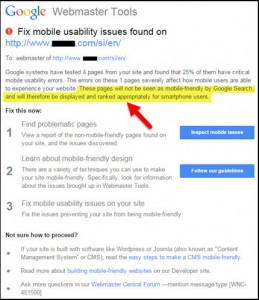
Making sure any website is laid out properly is important but for e-commerce it’s imperative.
From a user’s point of view your site needs to be simple to navigate and easy to understand while search engines need to be able to crawl and index your site as effectively as possible.
Still, information architecture isn’t the most thrilling of subjects, so I’m going to quickly walk you through the principles so that implementing it properly can become second nature.
Initial Site Structure
So, let’s start with your site structure. This should be hierarchical in nature with Categories and Sub-Categories that are logical and easy to understand from a site visitor’s point of view. begin with
the
money termsThey should also be consistent – there’s no use calling one category ‘Big Dog Collars’ and another ‘Collars for Small Cats’. You do, however want to make sure that the name of your category, and therefore any internal links on your site, contain the keyword that you’re targeting.
The best way to get this right is to start by going old school. Get yourself a pen and paper, do some warm exercises in your writing hand, and then start to lay things out. Begin with your top level categories – the money terms that your potential customers are most likely to be looking for. Next, if you can, break each of these down into sub-categories. Be concise, but also descriptive. If you’re selling ‘Dog Coats’, say so – don’t just say ‘Coats’. This sounds really simple but you’ll notice time and time again sites that use overly generic terms as their category page titles.
Keyword Research
Once you think you’ve come up with a structure that’s easy to navigate it’s time to do some volume based research. Whether it’s Adwords, Wordtracker, or another research tool, fire it up and start going through your categories one by one. Enter as many variations of your chosen keyword as you can think of and filter these into a list of terms that you could potentially target on your site. Next, note down the competition, search values, and any other relevant metrics in a spreadsheet for each of these phrases. Make sure you do this for every category – it’s boring and mundane but worth the effort.
(See also 10 Types of Buying Signals Found in Keyword Queries & How They Accelerate SEO Results)
Look over your spreadsheet and see if you can spot trends. Is there a gap where you can see a huge number of searches but low competition? If so, take that into account but remember that things change – next week it might be that your competition has caught up. If that’s the case, maybe a PPC campaign and separate landing page would be a better option instead of concentrating an organic search campaign on those terms.
Also, don’t concentrate on the money terms. Your top level categories are likely to be far trickier to rank for than your long-tail sub categories, so bear this in mind. Most of the time you’ll be looking for a gradual but consistent increase in sales and long tail keywords are most likely to deliver this quickly and with relatively less effort.
Update & Implement
Once you’ve decided on a system, go back and update your original hand written structure. Look over it again and make sure that it still makes sense. Put yourself in the shoes of a site visitor – is everything easy to find? Could an Internet novice browse your site without having to think? If the answer to both of those is yes, you’re probably onto a winner.
Finally, implement your structure. If you’re working on an existing site this means that you’ll be changing everything from the page URL to the title tags, meta description and body copy. Remember to 301 redirect any old pages to their new location. I’ll say that again – don’t forget the 301s! Not doing this is search engine suicide.
And Then…
The next few weeks will be spent tracking what happens. Are your rankings improving? Have site visits, average page views and sales increased? Don’t be afraid to tweak and change things to see what works and what doesn’t. If possible, A/B test different content and page layouts to see what your customers like. (Also see Shopping Cart Abandonment: 7 Kick-Ass Tactics To Bring Shoppers Back). If you find a page dropping down the rankings, react. Update the copy, build some links – in essence, be flexible.
Now Read:
- How To Be An Ecommerce Conversion Ninja
- How To Use Product Reviews To Drive SEO
- 3 Steps To Analyze Your Ecommerce Competition
Next Steps:
- How To Be An Ecommerce Conversion Ninja
- How To Use Product Reviews To Drive SEO
- 3 Steps To Analyze Your Ecommerce Competition
Hand-Picked Related Articles:
- How To Be An Ecommerce Conversion Ninja
- How To Use Product Reviews To Drive SEO
- 3 Steps To Analyze Your Ecommerce Competition
* Lead image adapted from The Rocketeer
Getting E-Commerce Site Structure Right
The post Getting E-Commerce Site Structure Right appeared first on Search Engine People Blog.
(111)
Report Post






